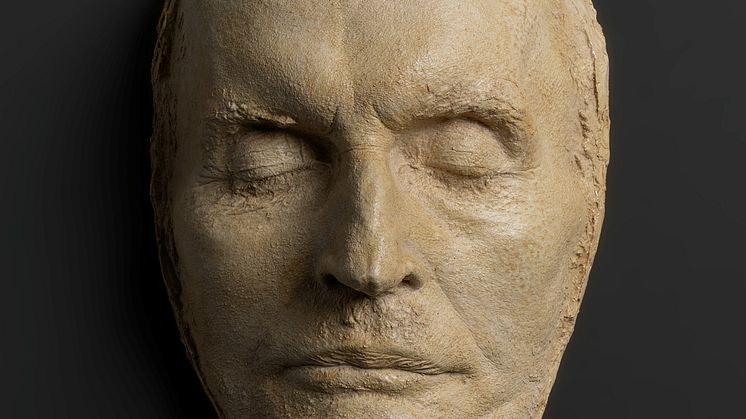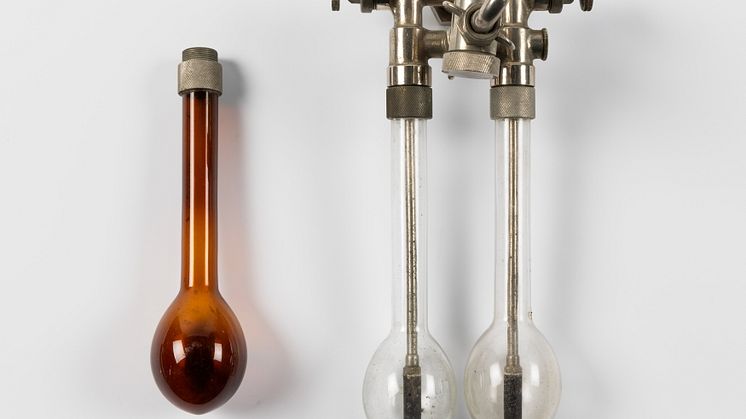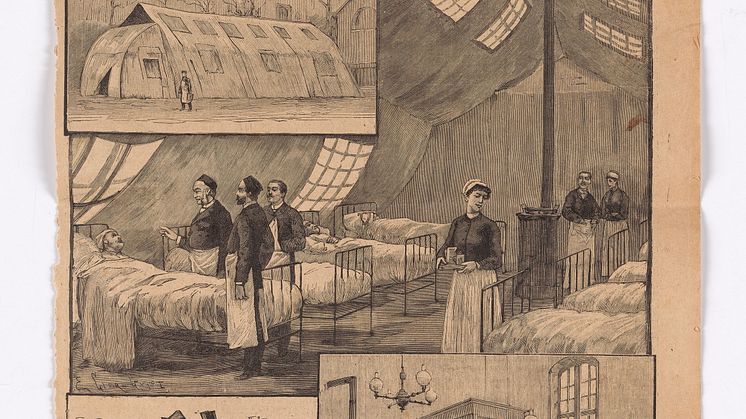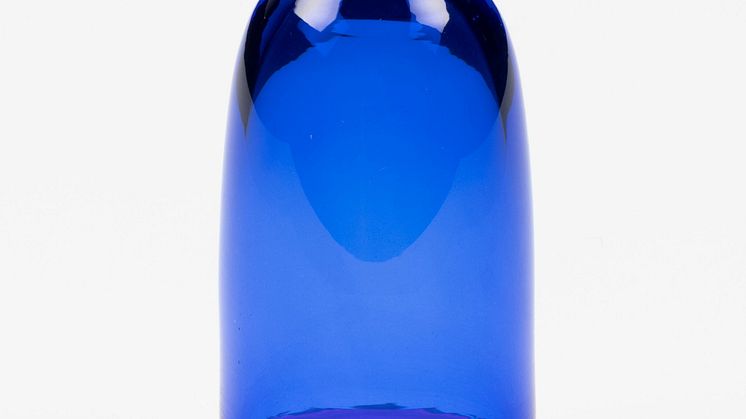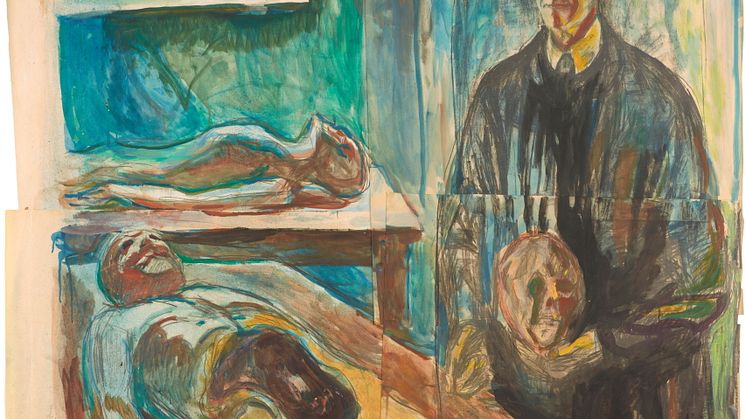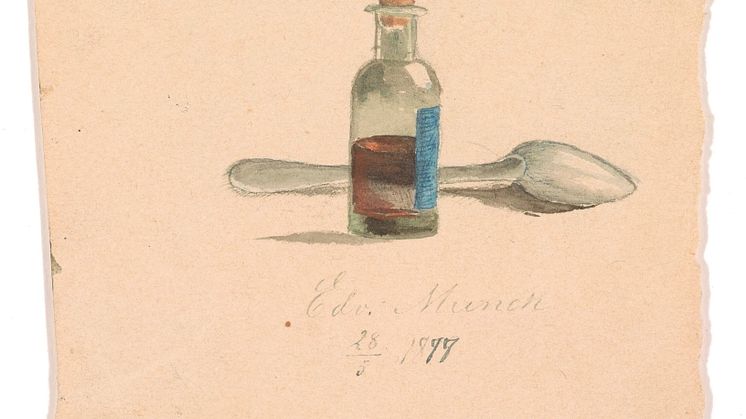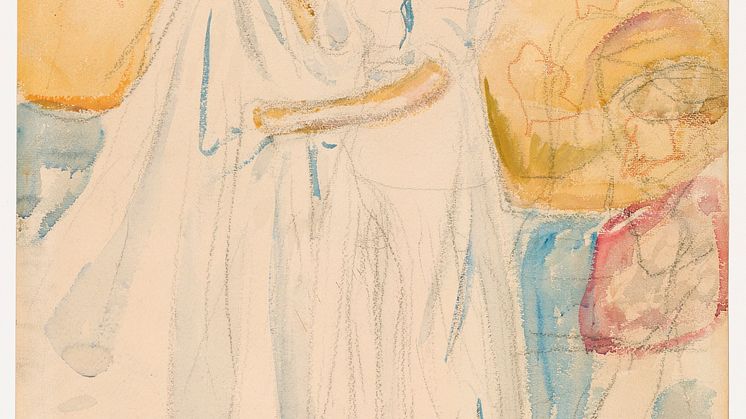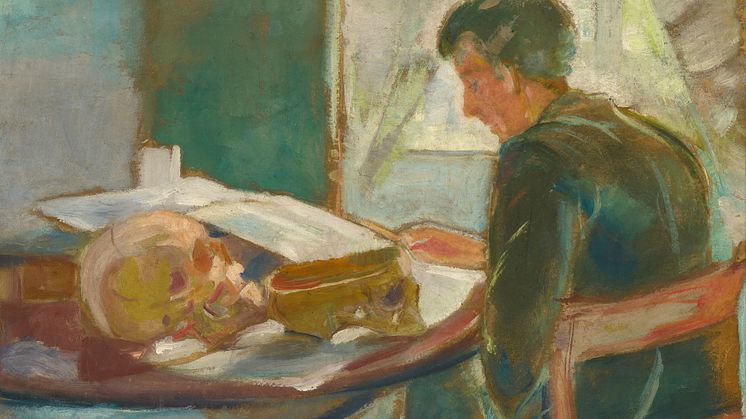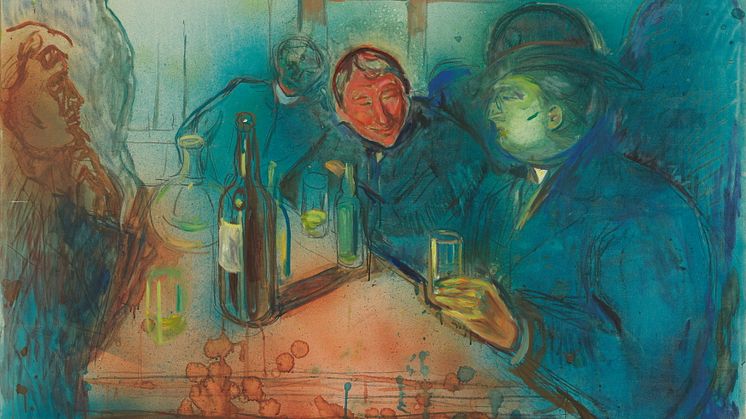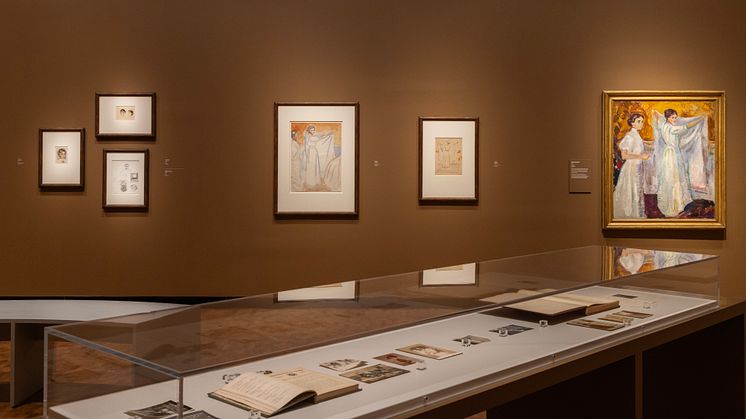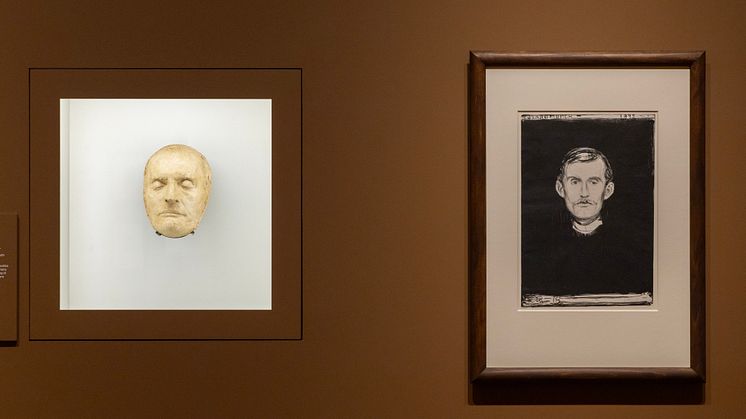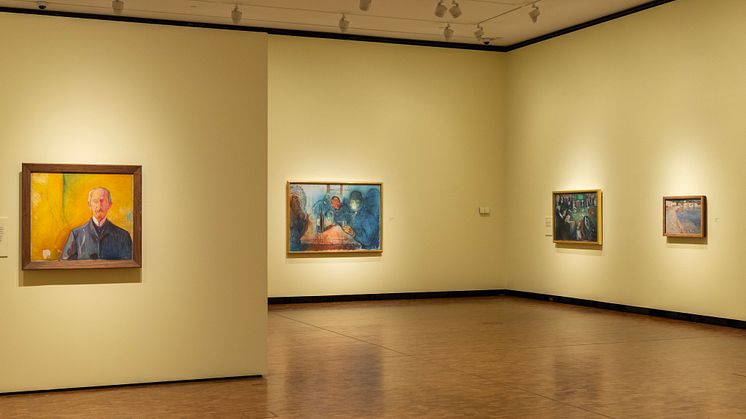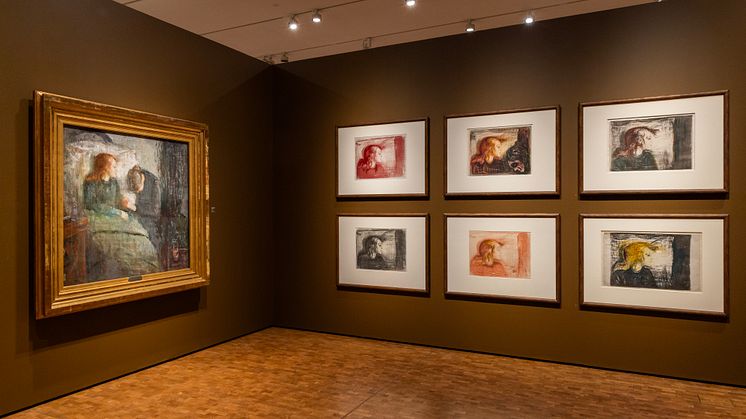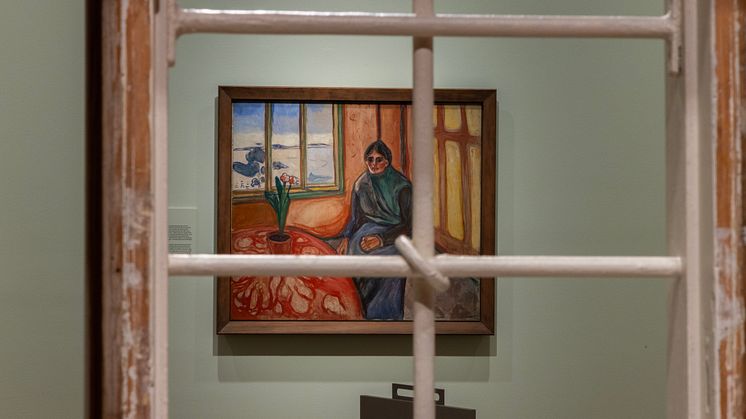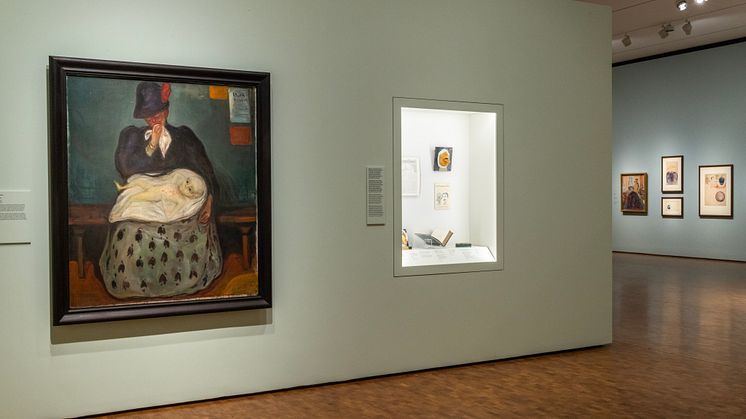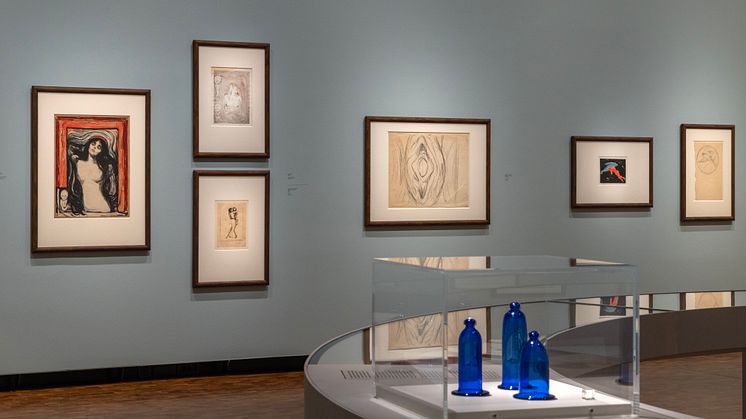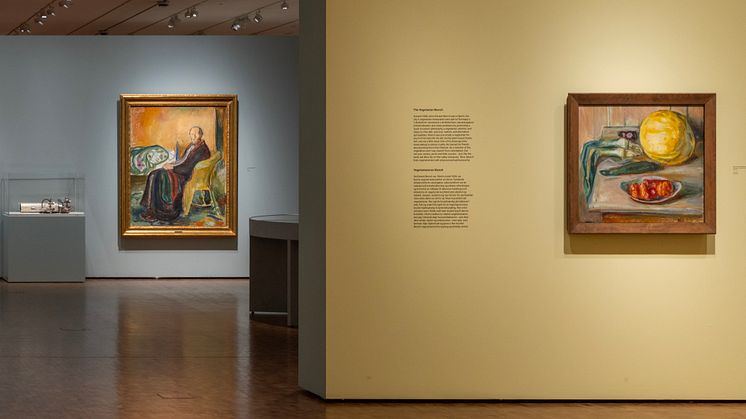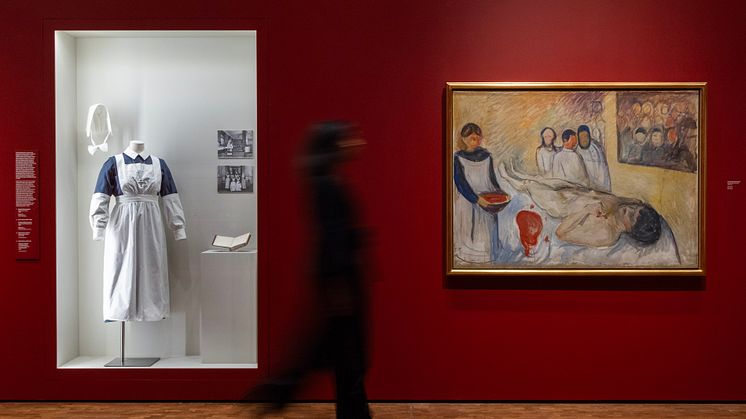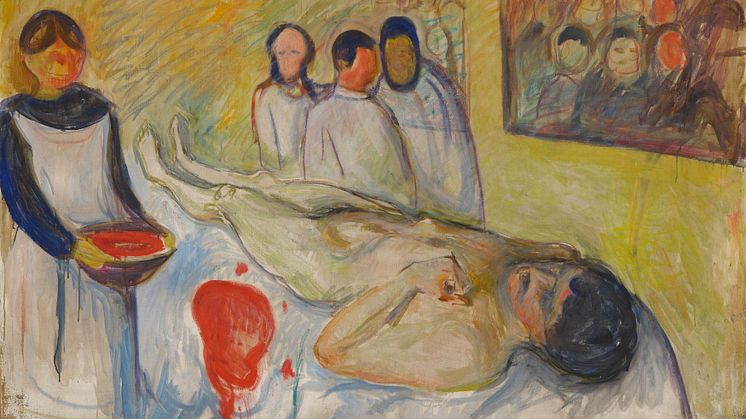
Press release -
Health, Medicine, and Care – Edvard Munch in a New Context
MUNCH presents Lifeblood: Edvard Munch, an extraordinary exhibition showing how Munch’s powerful and visceral art tells a story of modern healthcare, and reflecting on how medicine continues to shape our lives.
Combining artworks by Edvard Munch (1863-1944) with objects from the history of medicine, the exhibition is the result of more than a decade of extensive research by major scholars of Edvard Munch’s work. Lifeblood probes the universal condition of having a vulnerable body and considers medicine’s promises to heal sickness and disability. In addition, and throughout, the exhibition offers a feminist take on care.
Edvard Munch lived during a time of dramatic changes in the technology and practice of medicine. Germ theory, new medical imaging such as X-ray photography, modern contraception, and antibiotics were all products of his lifetime. As someone who was often sick, and as the son, brother and friend of doctors, Munch had a unique perspective on how modern healthcare affected his own life and the lives of his friends and family. He also recognized that men and women often experience sickness, health and care very differently.
Curated by Allison Morehead, Professor of Art History and Cultural Studies at Queen's University, Kingston, in partnership with MUNCH, this wide-ranging exhibition includes 150 works by Munch and 150 objects from the history of medicine borrowed from collections in Norway, Denmark, France, Germany and the United Kingdom.
Works from the MUNCH collection show hospitals, asylums, wellness retreats, doctors, patients and nurses. Loaned works include the original version of The Sick Child (1885-1886), Munch’s monumental Self-Portrait with Spanish Flu (1919) and his moody Night in Saint-Cloud (1890). These are juxtaposed with X-ray photography, glass sputum bottles, a nursing uniform, stethoscopes, a baby incubator, anatomical materials, contraceptive devices and much more.
Specific healthcare topics with a gender dimension are emphasised, as they are in Munch's work: melancholy, hysteria, syphilis, contraception, childbirth and infant care. The section on contraception in particular troubles the usual readings of key works such as Munch's Madonna, which are contextualised in relation to maternal health and birth control movements. Care itself is presented as a fraught intersubjective experience through which relations between people can be unsettled, strengthened or loosened, though also as an essential human experience that we all need.
Allison Morehead: ‘Lifeblood: Edvard Munch allows visitors to explore the history of healthcare through Munch’s powerfully expressive work, to feel and reflect on our bodily vulnerabilities, and to better understand our persistent quest for “health”.’
Tone Hansen: ‘Lifeblood reveals a lesser-known side of Edvard Munch — where art becomes a vessel for the fears, hopes, and compassion that surround illness and care. By intertwining Munch’s work with the history of medicine, this exhibition invites us to reflect on our own health and vulnerability in a time of deep uncertainty.’
Care is a central theme of Lifeblood, which is designed so that visitors with a range of backgrounds and bodies will feel supported and cared for. It includes a variety of options to look, read, listen, sit, lie down and be, both in the physical exhibition and through its accessibility website.
The exhibition is accompanied by a multi-author book with contributions by historians of art and medicine, healthcare professionals, disability scholars and activists, writers, artists and curators. Published by MUNCH and edited by Allison Morehead and Heidi Bale Amundsen, the book is published to coincide with the opening of the exhibition. A series of talks called ‘Who cares?’ is also planned. For more information on the public programme visit munchmuseet.no/en/whats-on?category=Livsblod.
Related links
Topics
Categories
About MUNCH
MUNCH is home to the world's largest collection of works by Norwegian artist Edvard Munch. In Spring 2021, MUNCH opened a brand new building on Oslo’s waterfront. The bespoke structure, designed by estudio Herreros, houses more than 26,000 works that Edvard Munch bequeathed to the City of Oslo. The museum also manages collections donated by Rolf Stenersen, Amaldus Nielsen and Ludvig Ravensberg.
The new museum traces the artist’s profound influence both on modern art and on artists through to the present day. Alongside displays of iconic artworks from the renowned permanent collection, temporary exhibitions will show Edvard Munch’s lasting influence in his own contemporary society, as well as on today’s generation of artists.
Visitors will experience the highlights of Edvard Munch’s oeuvre, in parallel with a wide-ranging programme of cultural events and experiences for visitors of all ages. From its location in Bjørvika, with unparalleled views of the Oslo Fjord, the museum will offer an extensive program of art and cultural experiences across thirteen floors.



